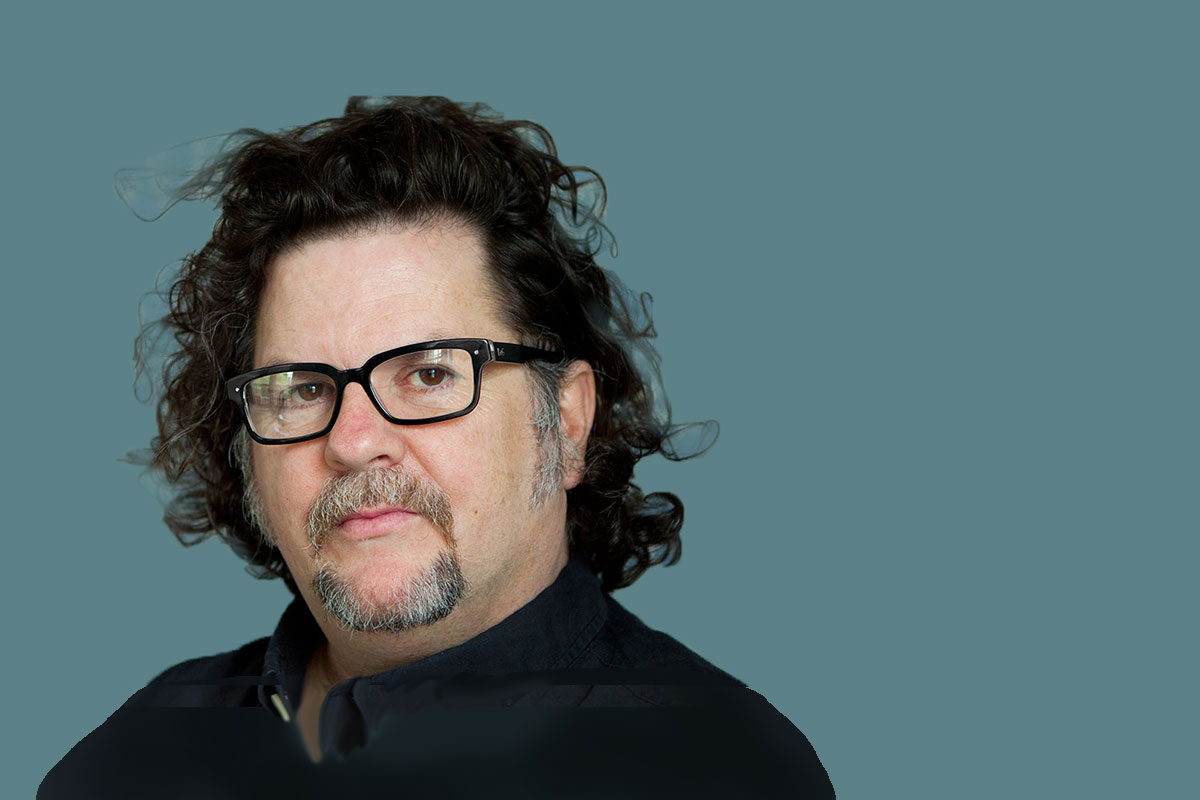
Choreographer and dance professor Tere O’Connor is a self-proclaimed music fiend. Most nights, he listens to a concert of different musicians. His favorites at the moment span different genres, from artists like Polish singer Jakub Józef Orliński to Brooklyn-based alternative band Dirty Projectors.
You would think such a musically inspired choreographer would choreograph to the music he listens to, but O’Connor explains why that isn’t always the case: “I listen to a lot of music, but I don’t make my work to music. For all my works, I make the work first and then have music created for them.” Instead of letting pre-existing music influence the musicality of his choreography, O’Connor “looks for musicality to come out of the body and create musical scores from the body.”
One of his goals for his pieces is to express a feeling to the audience, and his choreography does so through the rhythms. “The closest thing to a voice in dance is rhythm. It really approximates grammar and syntax in spoken word, even though it’s not really replicating it,” he says. Whenever he begins a new choreographic work, he first hears rhythms and then creates movements to match. Most of the time, he says, the rhythms feel inorganic at first. However, with rehearsals, his dancers turn these rhythms and choreography into something that seems natural, and, over time, the rhythm from his head gets into the dancers’ bodies. Because O’Connor starts with the movement and then has music composed for the piece, it’s also the choreography that tells the story and expresses the feeling, not just the music. The movement and music are intertwined, and one isn’t overpowering the other.
While O’Connor choreographs, he’s also composing the score. For a majority of his creations, he works with composer James Baker. Towards the end of the choreographic process, they spend a lot of time together to score the piece. After weeks of rehearsals with no music, O’Connor says, “when the music comes, it is like having a stranger visit for a while.” But after a few runs, the dancers and the music mesh. After all, the musicality is already in their bodies and the music is complementing that. Moreover, O’Connor describes that even though the music was created for the choreography, it doesn’t simply just bop with the existing movement. His scores are complicated. And he jokes that sometimes the dancers’ cue is faint and underneath another competing rhythm.
When he’s not setting a piece, O’Connor teaches ballet to students at the University of Illinois. In class, O’Connor emphasizes the importance of using multiple dynamics while dancing. Specifically, during staccato rhythms, such as frappés, students don’t have to default to placing the beat in their entire body, he says. “A staccato beat doesn’t mean you have to tense up every cell in your body. It can be rendered in one area. And then there can also be a stretch like you can hit a frappé and hit it, but then it lengthens.” He adds, “More than one quality can take place at the same time. And I always say something about where you place the beat in your body, is it like ‘one’ is in the pelvis and ‘two’ is on the floor? It doesn’t have to be in the entire body, like they’re electrocuted with every beat.”
In addition to playing with dynamics, O’Connor likes to hone in on rhythms and the subdivision of the beats. Each piece of music has a time signature and tempo, and within that is the melody and the rhythmic points between each beat. “You can be in that moment and then let it turn into, like, a million little points of music that’s going out your body, and use your imagination,” says O’Connor, “just to balance—you can balance with a big, pounding beat or you can use the tiny little beats to hold on to the balance. Not everything has to be like a sledgehammer over the head.”
To hear what’s been inspiring O’Connor in and outside of the studio lately, check out his playlist of songs below. “All of the songs are of artists who are sophisticated technicians but have chosen a very personal voice or style,” he says. “These personal choices are characterized by vocal texture/timbre or complex use of phrasing and interruptive rhythms. They are all experts in their own genres even as they forge new musical territory, which often encompasses some sort of hybridity.”
“Bonny Light Horseman,” by Bonny Light Horseman
“Bonny Light Horseman reaches into the canon of traditional English Irish songs and presents them through a contemporary folk lens with excellent individual voices.”
“Music for a While,” by Henry Purcell, performed by The King’s Singers & Jakub Józef Orliński
“Jakub Józef Orliński has brought the repertoire for countertenors into the light with his angelic, lyrical treatments.”
“Self Design,” by Dirty Projectors
“David Longstreth, the composer for the Dirty Projectors, is a genius manipulator of acoustic guitar, voice and the algorithmic possibilities of digital music production.”





